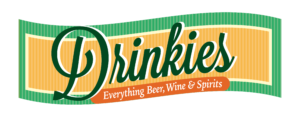Riesling originates from the Rhine region and is a white grape variety. This aromatic grape displays floral, almost perfumed, aromas along with elevated acidity. It is utilized in the production of dry, semi-sweet, sweet, and sparkling white wines.
Typically, Riesling wines are varietally pure and rarely undergo oak aging. As of 2004, Riesling ranked as the world’s 20th most cultivated variety, covering 48,700 hectares (120,000 acres) with a rising trend.
In terms of significance for quality wines, Riesling is commonly acknowledged as one of the “top three” white wine varieties, alongside Chardonnay and Sauvignon blanc. Notably, Riesling is highly “terroir-expressive,” indicating that the wine’s origin significantly influences its character.
How is Riesling Made?
- Harvesting: Riesling grapes are harvested with precision, emphasizing the balance between sugars and acidity. Timing is crucial to capture the essence of ripeness.
- Crushing and Pressing: Post-harvest, a gentle crushing process extracts the precious juice, separating it from skins and seeds. Delicate pressing sets the stage for subsequent winemaking steps.
- Fermentation: The liberated juice undergoes fermentation, a natural or induced process where yeast converts sugars into alcohol. The choice of fermentation vessel, whether stainless steel or traditional oak, influences the final flavor profile.
- Aging: Riesling may undergo an aging process, nurturing complexity within stainless steel tanks, oak barrels, or a blend of both. Oak aging introduces nuanced flavors, enhancing the wine’s depth.
- Optional Processes: Some winemakers opt for processes like malolactic fermentation or blending to add distinctive touches and achieve a well-balanced Riesling.
History of Riesling
Riesling boasts a rich history, with numerous written references to the variety dating back to the 15th century, albeit with diverse orthography. The earliest recorded mention dates to March 13, 1435, in the storage inventory of Count John IV of Katzenelnbogen in Rüsselsheim (near the Rheingau).
The spelling Rießlingen appears in many contemporary documents. The modern spelling “Riesling” was first documented in 1552 in the Latin herbal of Hieronymus Bock.
A 1348 map of Kintzheim in Alsace contains the text “zu dem Russelinge,” but it remains uncertain if this refers to the grape variety. However, in 1477, Riesling was documented in Alsace with the spelling “Rissling. In Wachau, Austria, a small stream and vineyard are both named Ritzling, locally claimed to have inspired the name Riesling. Despite lacking documentary evidence, this claim is not widely accepted.
World’s Best Riesling Regions
- Mosel, Germany: The steep slopes of the Mosel region yield Rieslings known for their vibrant acidity, minerality, and intense fruit flavors.
- Alsace, France: Alsace produces complex and aromatic Rieslings, ranging from dry to sweet. The region’s unique terroir imparts a distinct character to its wines.
- Clare Valley, Australia: Australian Rieslings from Clare Valley showcase zesty acidity, citrus notes, and a characteristic floral aroma. The region’s cool climate contributes to the wine’s crisp profile.
- Finger Lakes, USA: New York’s Finger Lakes region produces Rieslings with a balance of sweetness and acidity. The cool climate allows for the development of expressive and versatile wines.
- Marlborough, New Zealand: Known for its Sauvignon Blanc, Marlborough also excels in crafting vibrant and aromatic Rieslings. These wines exhibit lively acidity and notes of tropical fruits.
Best Foods to Pair with Riesling
- Spicy Cuisine: The natural sweetness and acidity of Riesling make it an excellent companion for spicy dishes, such as Thai or Indian cuisine.
- Seafood: Riesling’s crispness complements seafood dishes, especially those with a touch of spice. It pairs well with everything from grilled fish to sushi.
- Pork: Whether roasted, grilled, or in a sweet and savory sauce, Riesling’s versatility harmonizes with various pork dishes.
- Soft Cheeses: Riesling pairs delightfully with soft cheeses, offering a balance to the creaminess of brie or camembert.
- Citrusy Salads: The citrus notes in Riesling enhance the freshness of salads, making it a suitable match for vinaigrette-dressed greens.
Riesling – A Delightful Drop
Riesling, with its winemaking journey and rich historical tapestry, stands as a testament to the diversity and adaptability of white wines. Whether enjoyed in the picturesque vineyards of Mosel, the charming landscapes of Alsace, or the emerging wine regions of Australia and the USA, Riesling narrates a story of simplicity and global appreciation.
Here’s to Riesling, a varietal that continues to captivate wine enthusiasts with its versatility and wide-ranging expressions. Cheers! Explore more about types of wine.

























